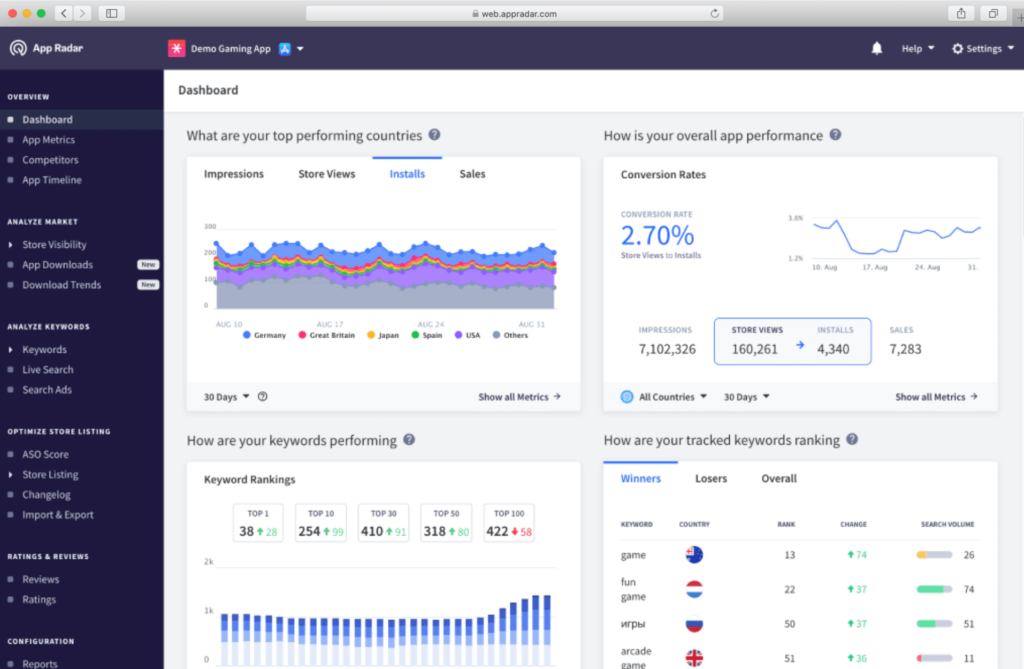In the fast-paced world of mobile app development, success isn't a one-time achievement; it's an ongoing journey of refinement and enhancement. To thrive, you need to utilize app analytics as your guiding compass, providing valuable insights into user behavior and app performance. By harnessing the power of these insights, you can steer your app towards iterative development and continuous improvement. Learning how to improve your app using app analytics and iterative development is a must.
In this comprehensive guide, we'll explore the art and science of leveraging app analytics to make informed decisions, prioritize development efforts, and to keep your app in sync with evolving user expectations. By the end of this article, you'll be equipped with the knowledge and know how to improve your app using app analytics and iterative development.
The Role of App Analytics in Continuous Improvement
App analytics is the systematic collection, measurement, and analysis of data related to your app's performance and user behavior. It plays a pivotal role in the iterative development process by providing the following benefits:
Data-Driven Insights: App analytics furnishes you with real-time data and insights into how users engage with your app, enabling informed decision-making.
User-Centric Development: By understanding user behavior, preferences, and pain points, you can tailor your app's development to meet user needs and expectations effectively.
Prioritizing Features: App analytics helps you identify which features are popular and which ones may need improvement or removal. This allows you to prioritize development efforts.
Optimizing User Experience: Data-driven insights enable you to refine the user experience, reducing friction points and enhancing overall satisfaction.
Gathering the Right Data
To embark on a journey of continuous improvement, it's essential to gather the right data. Here are the key metrics and data points you should focus on:
User Acquisition: Understand how users find and install your app. Monitor the effectiveness of marketing campaigns and referral sources.
User Engagement: Track user interactions within your app, including session duration, screens viewed, and actions taken.
Retention: Measure user retention rates to assess your app's ability to keep users coming back over time.
Conversion Rates: Analyze conversion rates for specific actions within your app, such as sign-ups, purchases, or completing forms.
User Feedback: Collect user feedback through in-app surveys, reviews, and feedback forms to gain qualitative insights.
Crash Reports: Monitor and investigate app crashes to identify and fix issues that negatively impact user experience.
Funnel Analysis: Create funnels to track the user journey and identify drop-off points, allowing you to optimize conversion paths.
Utilizing App Analytics for Iterative Development
Now that you're equipped with relevant data, let's explore how to leverage app analytics for continuous improvement through iterative development:
1. Define Clear Objectives:
Start by setting clear objectives for your app. What specific metrics or KPIs do you want to improve? Whether it's increasing user engagement, reducing churn, or boosting conversion rates, define your goals.
2. Analyze User Behavior:
Dive deep into app analytics to understand how users interact with your app. Identify patterns, preferences, and pain points in their journey. Use this data to uncover areas that require attention.
3. Identify High-Impact Areas:
Prioritize the identified pain points or opportunities based on their potential impact on your objectives. Focus on areas where improvements can yield significant benefits.
4. Hypothesize and Experiment:
Formulate hypotheses on how to address the identified issues or improve user experiences. Create experiments or A/B tests to validate your hypotheses and measure the impact of changes.
5. Measure and Iterate:
Implement the changes and closely monitor their effects through app analytics. Measure key metrics before and after the adjustments. Iterate based on the results, refining your approach further.
6. Gather User Feedback:
In addition to quantitative data, gather qualitative feedback from users. Their insights can provide context and guide your decision-making process.
7. Regularly Review and Adjust:
Continuous improvement is an ongoing process. Regularly review app analytics, assess the impact of changes, and adjust your strategies accordingly.
Conclusion
App analytics is not just about collecting data; it's about using that data to drive iterative development and continuous improvement. By understanding user behavior, gathering the right data, and setting clear objectives, you can identify areas for enhancement and prioritize development efforts effectively.
Leverage app analytics to experiment, measure, and iterate, always striving to enhance the user experience and achieve your app's goals. In a landscape where user expectations constantly evolve, the ability to adapt and improve is the key to long-term success. So, embrace the power of app analytics, and let it be your guiding light on the path to continuous app enhancement and user satisfaction.
Have a mobile app idea that you would like to explore? Visit our website and let’s get on a call!
For more content like this, visit our blog!

